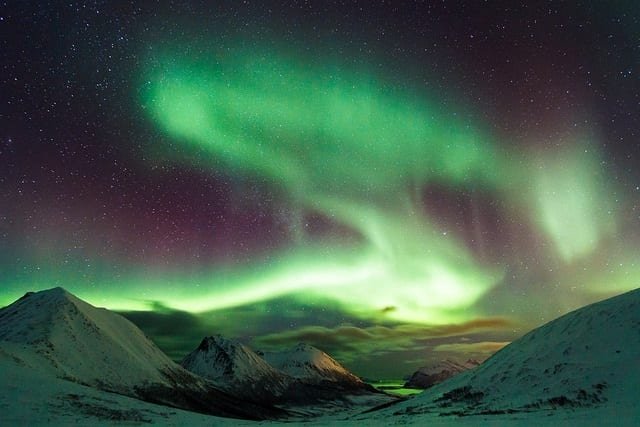By Alfred Stallion
Eastern Europe is often overlooked when it comes to holiday planning, but it’s one of the most fascinating and diverse areas on earth – made better by the fact it’s easy to travel between multiple countries. But just where should you start? Here we’ve picked out our five favourite locations – and you can easily get between each one, meaning you could link all five together for the holiday of a lifetime.
Norway – The Northern Lights
Start over in Norway, and head northwards to experience the Northern lights. You’re best catching these in winter/early spring, so plan accordingly for the rest of the holiday. Eastern Europe during the winter months can be cold, but beautiful, whereas spring is warmer and you’ll get the first flowers. Whichever you choose, starting your 2016 holidays to Norway will lead to a great send off, witnessing one of the world’s greatest natural events
There’s a whole variety of ways to catch the Northern Lights, so choose one that best suits you. Whether that’s out on the water on a cruise, after a long day of dog-sledding, or on a coach trip from a major city, you can take all the time you want. We recommend the dog-sledding, since it’s a great chance to see the local lands – and possibly even some of the wildlife! You might even get lucky and see some of the reindeer, or an elusive lynx.
From Norway, why not make the next leg of your journey over to:
Estonia – The City of Tallinn
Estonia is often overlooked when it comes to planning holidays, but it’s capital is a beautiful mix of medieval charms and soviet-era architecture. With a rich history, there’s something for everyone to enjoy here. We particularly recommend leaving time to explore the key buildings of the city, including the town hall – dating back to the 1400s – and the Kadriorg Palace. Then head over to Kumu, which is much more modern and futuristic looking! It contains Estonia’s largest collection of art, and features exhibitions on art from the Soviet era as well as older works.
With its eclectic mix of church spires, baroque palaces, society buildings and small wooden houses, it’s one of the most fascinating cities in Europe, and well worth your time.
From here, it’s a short journey on to:
Lithuania – The Aukstaitija National Park
Lithuania has many beauties, but one of the the jewels in its crown is the Aukstaitija National Park. It opened in 1974, and as well as the ancient oaks, marshes and rivers, there’s some fascinating tales to be found. Visit the Ginuciai Water Mill, the only one in the area to be in original working order. That and it’s rumoured to be haunted by the devil himself! Then there’s the bee-keeping museum, which will take you through the art of bee-keeping from ancient times to the modern day. Niche, yes – but utterly engaging.
Of course, no trip to Lithuania should ignore the Hill of Crosses! This place has probably been in use since the 19th century, but potentially earlier. The Soviets attempted to bulldoze the crosses, but each night people would return and add to it. Today it’s filled with thousands of crosses, from memorials to intricately carved art. Head there in the off-season, and you’ll discover a wonderfully eerie spiritual site.
Next, it’s time to head to b :
Latvia – Riga
Riga, often called the pearls of the Baltics, is a stunning city, with lots on offer. On the UNESCO Heritage List, it sits at the mouth of the Daugava, and this central location for trade has led to it being a cultural wonderland. Leave yourself time to see the Latvian National Opera and Ballet, or visit Old Town. It’s also home to a huge variety of Art Nouveau examples, so spend a day just taking in the architectural delights.
Make sure you take in Riga’s central market, set in WWI era Zeppelin hangers! Experience the unique fusion cuisine, haggle for local goods, or simply admire the setting – it’s one thing not to be missed.
From here, it’s finally time to end up in:
Slovakia – The Tatra
The Tatra is a series of mountains which are mostly based in Slovakia but expanding up into Poland. Often called the miniature Alps, they’re a fabulous combination of alpine hiking, skiing or even just spa holidays. The ski season often lasts until May, but even out of season it’s worth a visit. You can head to High Tatras for the highest peak in Slovakia – Gerlachovsky Stit. If you want to challenge this peak, we recommend hiring a guide. If you’re looking for breathtaking views, but with slightly less effort, try Lomnicky Stit. This one is accessible via cable car, and you’ll find an observatory perched atop it.
Before catching your flights home, make sure to spend some time in the capital – Bratislava. Located on the Danube, it’s vibrant, with a young population but a rich history. Leave yourself a day to visit the Old Town, and you’ll go home feeling like you’ve experienced the most fascinating and most diverse cities Europe has to offer!
 Lean more about Alfred Stallion visit his website at http://www.baltictravelcompany.com/.
Lean more about Alfred Stallion visit his website at http://www.baltictravelcompany.com/.











